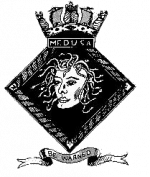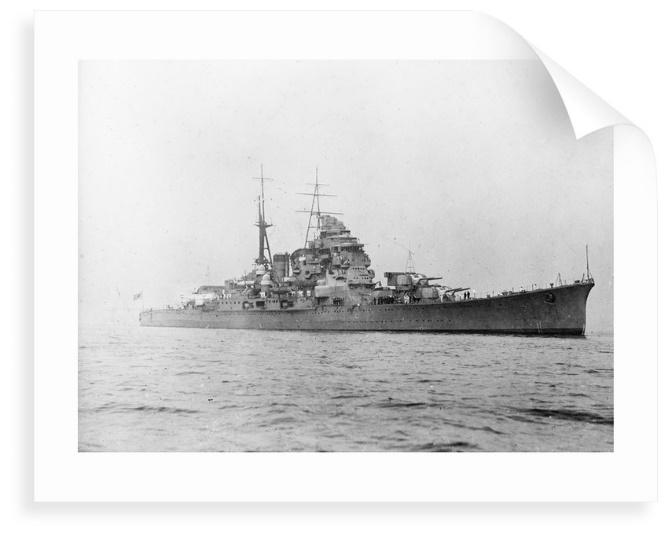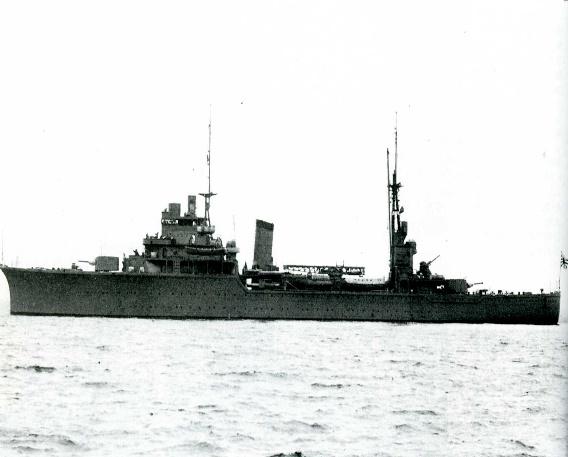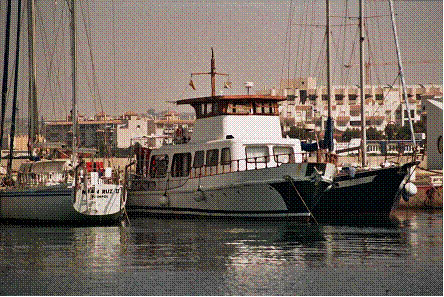HDML 1062
Thornycroft, Singapore 1/42?
London Gazette 29/1/46 – For the evacuation of Sungei Punngor in 1942
- MID TLt Colin Edward McMillan RNZNVR (Post)
Known Crew
- TLt Colin Edward McMillan RNZNVR Commanding Officer HDML 1062 For the evacuation of Sungei Punngor in 1942 MID killed in action 16/02/1942 when HDML 1062 was sunk by Japanese surface craft gunfire, Banka Strait. Son of Robert John and Mabel Macmillan (nee Hart), of Tauranga, New Zealand
- Lt Richard Anthony West Pool RN HDML 1062 (Senior Officer for operations off the west coast of Malaya – 12/41)
- LSea William Edward Wells C/J 98299 HDML 1062. Killed in action16/02/1942 when HDML 1062 was sunk by Japanese surface craft gunfire, Banka Strait. Previously awarded a DSM. Son of William Edward and Elizabeth Waterman Wells; husband of Ethel Amy Wells, of Romford, Essex
- AB Bin A Ismail MN545 HDML 1062
- Sto1 William Rowland D/KX 116122 HDML 1062 killed in action 16/02/1942 when HDML 1062 was sunk by Japanese surface craft gunfire, Banka Strait. Son of Arthur and Elize Ella Rowland, of Miles Platting, Manchester
Wartime Activities
- 12/41 HDMLs 1062 and 1063 assigned to special operations on the west coast of Malaya
- 24/12/41 HDML 1062, towing two motor boats, departed Singapore for Port Swettenham. HDML 1062 subjected to a series of squalls and tows had to be recovered several times during the night.
- 25/12/41 Christmas dinner consisted of prunes and condensed milk, due to rough weather and tea consisted of a Christmas cake. In the evening, HDML 1062 arrived in Port Swettenham
- 26/12/41 HDML 1062 departed Port Swettenham to join HDML 1063 at Sungei Burnan. A civilian rubber planter, William Harvey, acted as guide and the two HDMLs rendezvoused early evening.
- 26/12/41 At last light, HDMLs 1062 and 1063 departed to land embarked troops between Taiping and the Perak River. HDML 1063 transferred troops to a motor boat and retired. HDML 1062 transferred troops to a motor boat, but the engine would not start. HDML 1062 recovered the troops and sank the motor boat before returning to Port Swettenham. On the return trip, HDML 1062 encountered a Koleb (native boat) and embarked a rubber planter his wife and 12 year old daughter, who had travelled 300 miles in the open boat. A Chinese and a Malay chose to remain with the boat and headed for the coast. HDML 1062 returned to Port Swettenham and landed the survivors, before taking on fuel and stores from Kudat.
- 27/12/41 In the early morning, Port Swettenham suffered an air raid by British aircraft identified as Bristol Blenheims. One aircraft was shot down amongst the mangrove swamps to the west. HDMLs 1062 and 1063 conducted an unsuccessful search for survivors.
- 28/12/41 HDML 1062 departed Port Swettenham to recover a raiding party. The raiding party were recovered after ambushing a Japanese motor transport convoy.
- 6-7/1/42 HDML 1062 escorted the tug Elisabeth from Port Swettenham to Malacca, which has been evacuated. Both vessels continued on towards Muar in company with two steamships. SS Kinto was attacked, hit several times by Japanese aircraft, and set on fire. HDML 1062 and the tug Elisabeth were machine gunned but did not suffer casualties.
- 1300/7 The convoy reached Muar. In the evening someone representing himself as the District Commissioner boarded HDML 1062 and ordered the vessel to leave as its presence was provoking a Japanese attack. He was ordered to leave at gunpoint.
- 8/1/42 HDML 1062 and the tug Elisabeth reached Batu Pahat.
- 9/1/42 HDML 1062 and the tug Elisabeth reached Singapore Naval Base.
- 1/2/42 HDMLs 1062 and 1063, towing naval whalers, evacuated troops from the Malayan mainland to Singapore. Coverage was provided by the gunboats HMS Dragonfly, HMS Scorpion and HMS Grasshopper.
- 1942 Evacuation of Sungei Punngor
- 14/2/42 HDML 1062 wassheltering in the Bulang Archipeligo south of Singapore in the next bay to ML 310.
- 16/2/42 Sunk by Japanese surface craft gunfire, Banka Strait
Harbour Defence Motor Launch 1062
Sunk by gunfire Banka Straits 16 February 1942
[Version 2. 0. 0; February 2020]
Michael Pether
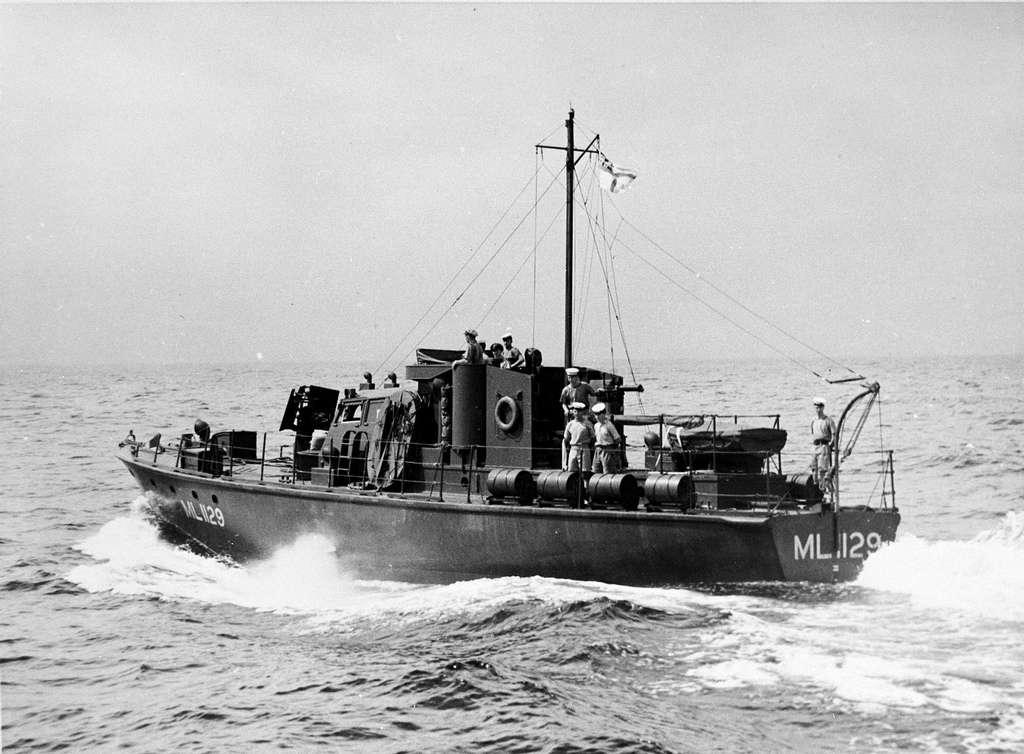
A Harbour Defence Motor Launch of the same design as HDML 1062
HDML 1062 was one of two (the other was HDML 1063) Fairmile Harbour Defence Motor Launches built in Singapore and completed for the Straits Settlement RNVR. Others, with batch numbers up to 1220, had been planned or construction started, but wartime events and the invasion of Singapore meant they were not completed – and some never started. In fact, post War in 1946 the ‘Straits Times’ newspaper had an advertisement for the sale of HDML1086 “… in bad condition…” at Thornycroft, Tanjong Rhu. HDML 1086 must have languished, incomplete, in Singapore during Japanese occupation.
There were also a small group of similar size and design launches used by the SSRNVR,” … Four had been earlier built for the SSRNVR. by Thornycroft but were outside the normal Royal Navy numbering system for HDML and received names instead: ‘Pahalwan’, ‘Panglima’, Pennigat’, and ‘Panji’. Large numbers were apparently ordered but only these two actually completed – and many never begun. These were small patrol boats that belied their designation. With excellent sea keeping capabilities and a 2000 mile range, they served with coastal forces worldwide…”. (“A Bit of History – RNVR HDML in the Far East 1941).
The HDML are sometimes confused in historical narratives with the HMML serving in Singapore, but the HDML were 40 feet shorter than the HMML with much less speed.
Harbour Defence Motor Launch specifications were:
- 72 foot overall
- 46 tons
- Twin diesel engines
- Maximum speed 12.5 knots/ Cruising speed 10 knots
- Fuel: 1500 gallons diesel
- Range 1000 nautical miles at 12 knots and 2000 nautical miles at 10 knots
- Standard Armament was a 3 pounder Mk1 gun on the foredeck and two .303 Lewis Guns. plus, eight depth charges
The earliest actions of HDML 1062 with Lt Colin MacMillan, RNZNVR, in command were in December 1941 after the Japanese had invaded northern Malaya – it was assigned to ‘special operations’ on the west coast of Malaya with its twin vessel HDML 1063. On Xmas Eve 1941, HDML 1062 set off from Singapore towing two motor boats headed for Port Swettenham and arrived there on Xmas Day 1941. On Boxing Day, it left Port Swettenham with a civilian rubber planter (William Harvey) as a guide to join HDML 1063 at Sungei Burnam. They landed troops between Taiping and the Perak River and on the return journey to Port Swettenham picked up another rubber planter with his wife and 12-year-old daughter from a native boat. On 28 December they left Port Swettenham again and recovered a raiding party who had ambushed a Japanese motor transport convoy.
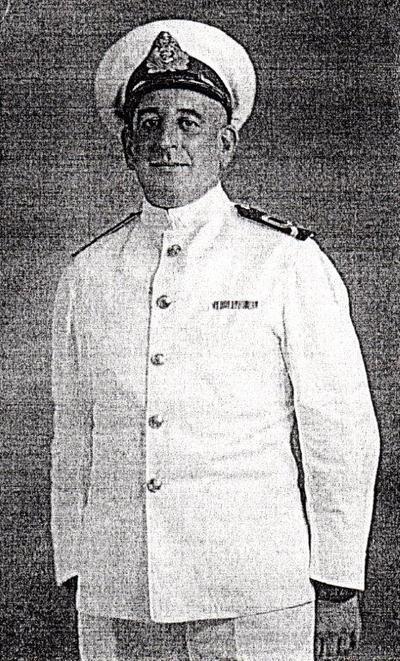
On 1 February, HDML 1062 and 1063, towing naval whalers, evacuated troops from the Malayan mainland to Singapore – under cover provided by the ex – Yangste River gunboats ‘HMS Dragonfly’, ‘HMS Scorpion’ and ‘HMS Grasshopper’. It was around this time that Lt. Colin MacMillan assisted in the evacuation of Sungei Punngor and for his deeds received his ‘Mention In Despatches’.
On the night of 8 February 1942 the Japanese forces landed on the north west coast of Singapore island and over the next few days the front line moved south through the outer suburbs of Singapore.
On the evening of 13th February 1942 as the Japanese Army tightened its encirclement of the central area of the city of Singapore the Allied troops and civilians endured constant bombing and artillery shelling – the city was in flames; thousands of dead bodies littered the streets and much of the city lay in ruins. In the suburbs hand to hand fighting was taking place in last ditch attempts to stop the Japanese overrunning the city.
The governmental authorities had been very tardy and inefficient in the evacuation of civilians until only a few days before and now, as the last vessels that could be remotely called ‘ships’ prepared to leave, chaotic scenes were taking place at the Singapore wharves as dozens of European and Eurasian civilian men, together with hundreds of servicemen from the UK, Australia, India and New Zealand scrambled onto any vessel departing that would take them. Most women and children who wanted to escape by ship had already gone – albeit that most of the ships which had left in the previous couple of days were doomed to be sunk.
The military had intensified their efforts to evacuate skilled servicemen to Batavia in Java, to prepare for another stand against the Japanese in the Dutch East Indies, and amongst this group it appears that a small contingent of men from the RAOC ( Royal Army Ordnance Corps) were assigned to depart on HDML 1062.
At Collier Quay at the Singapore wharves (now part of the Fullerton Hotel) a small flotilla of modest sized vessels had been gathered to transport key army personnel and another group of very senior Navy and Airforce Officers to Java.
Amongst the vessels (Captains) were;
- The ‘Pulo Soegi’, a small coastal merchant vessel (Lt. A. J. Martin, RNZNVR)
- Fairmile ‘B’ launch ML 310 (Lt. H. J. Bull, RNZNVR)
- Fairmile ‘B’ launch ML 311 (Lt. E. J. H. Christmas, RANVR with Lt. E. Staples, RNZNVR as First Officer)
- Fairmile ‘B’ launch ML 432 (Lt. L.H. Herd, RNZNVR with Lt. W.A. Bourke, RNZNVR as First Officer)
- Fairmile ‘B’ launch ML 433(Lt. Cdr. H. Campey, RANVR with Lt Bob Arkley, RNZNVR as First Officer)
- HDML 1062 (Lt. C. E. MacMillan, RNZNVR with Lt G. K. Stein, MRNVR, as First Officer)
- ’HMS Grasshopper’ – a 200-foot ex Yangste River gunboat and its sister ships,
- ‘HMS Dragonfly’
- ‘HMS Scorpion’
Departure from Singapore…
At about midnight on 13 February 1942 (some sources say 2200 hrs and others say it was at 0100 hrs on 14 February) there are references to a ‘naval launch’ which we presume to be HDML 1062 (since 1062 is identified specifically as being with the Yangste River gun boats the following day) leaving Singapore harbour in company with ‘HMS Grasshopper’ and ‘HMS Dragonfly’ ( statement by L/Cpl Hollard, Reconnaissance Group and a passenger on ‘HMS Dragonfly).
For specific events and chronology, we can draw on a ‘Narrative’ compiled by Lt. G.K. Stein in Palembang POW camp (it is part of a much larger collections of reports ordered by the Allied Commanding Officer in the camp in 1942 Cmdr. Reid, RN). Stein tells us that; “… 13.2.42 2150 hrs. Left Singapore en route to BATAVIA: ship’s complement 45. Via Durian, Berhala and Banka Straits…”.
Then there is (in page 106 of the book “Course for Disaster: From Scapa Flow to the River Kwai” by Lt Richard Pool) a record that on 14 February HDML 1062 was sheltering in the Bulang Archipelago, in the next bay to HMML 310. In the book Pool recounts how after HMML310 left Singapore Harbour late on 13 February they motored through the night south through the islands south of Singapore past the large Pulau Batam, but early next morning they began to see aircraft culminating in the sighting of a Japanese reconnaissance aircraft which forced HMML310 to “… turn into the Bulang Archipelago only about 35 miles south [ of Singapore] which we did at 10. . A small bay with a Chinese village lay behind a fringe of palm trees … We noticed ML1062 make its way into the bay just beyond ours …”. Bulang Archipelago, a group of islands dominated by what is now named Pulau Bulan (spelt Bulang in Chinese), lies to the southwest of Pulau Batam.
Who was aboard HDML 1062:
Lt Stein recorded 30 RAOC on board which means his vessel had been required to embark one of the large groups of RAOC out of some 100 RAOC specialists who were being urgently evacuated from Singapore as men with a high level of skill needed to continue the war elsewhere.
Other RAOC men had boarded the ‘Pulo Soegi’, HMML 311 – both also sunk in the Banka straits – and HMML 432 (the latter beached safely on Banka Island without casualties). Also, on 14 February Lieutenant I. D.S. Forbes, on ‘HMS Grasshopper’ says he saw ‘1062’ when it joined ‘HMS Grasshopper’ and observed at about 0900 (approx.) “… At this time we were joined by a ‘Fairmile’ launch ML1062 with troops of the Gordon highlanders on board …”, this may be a ‘red herring’ or may just mean that the ‘Infantryman’ recorded by Lt Stein was a lone soldier from the Gordon Highlanders and that person was seen by Lt Forbes.
In the written family history of Lt MacMillan (the Tauranga City Library document, htpp://tauranga.kete.net.nz) there is the comment that “… there were around 50 passengers on board …”, but the source of this information is unknown and this is not backed up by sources who were POWs in Palembang and Changi ( below) so must be discounted,
- Firstly , the authoritative report compiled by Cmdr. Reid, RAF in Palembang camp states that there were 3 Officers ( who must have been MacMillan, Stein and another unidentified naval officer) in command of HDML1062, 9 naval ratings and that there were 35 Army and 1 RAF as passengers – this should be interpreted in the context of Steins ‘narrative’ below particularly insofar as ‘Supernumerary’ naval personnel.
- In the book “Spotlight on Singapore’ by Denis Russell–Roberts, who became a POW in Changi and whose wife Ruth had escaped on the ‘Mata Hari’ but been captured by the Japanese and initially imprisoned on Banka Island (she tragically died in January 1945 in another of the horrendous Palembang Internment camp in southern Sumatra). As a result of his wife being interned and nothing known of her fate during the War, Denis Russell–Roberts was very focussed on the fate of the evacuation ships – he states in his book that HDML 1062 was “… sunk by gunfire in the Banka Straits on 16th February 1942… “and there were “… 10 survivors and 38 missing …” which equates to the same total number aboard as recorded by Cmdr. Reid.
- Because Russell–Roberts was in Changi POW camp in Singapore he would have been aware of the work by another POW in that camp by the name of Captain David Nelson, SSVF, who for much of the War headed the team comprising the ‘Bureau of Record and Enquiry’ who amassed a veritable room full of records on the tens of thousands of servicemen in the region – and their fate. Russell – Roberts may even have sourced his information on the HDML 1062 from Captain Nelson’s files because in a post war book written by Captain Nelson he records insofar as what he calls ‘ML1062’ the following “… left Singapore 13.2.42. Sunk by gunfire south end of Bangka Straits, 16.2.42. Passengers Army and RAF 35, including Lt. G.K. Stein, MRNVR. Estimated 10 survivors…”.
- However, the final word must be given to Lt G.K. Stein as the only surviving naval officer and from his ‘Narrative’ compiled in Palembang he recorded,
“CREW:
-
- Permanent 10 (2 officers & 8)
- Supernumerary 4 (1 officer & 3)
- Passengers 30 RAOC
- 1 Infantryman
- Total 45”
An interesting discrepancy in Stein’s short ‘narrative’ is that he also later records one ‘RAF’ man as being a ‘survivor’ (below). It is completely understandable that Lt Stein had been severely traumatised by the events of the shelling and sinking of his vessel, so it is not clear whether he meant the ‘Infantry man’ to be from the ‘RAF’ or not. Probably an RAF man.
Voyage to the Banka Strait:
Lt. Stein recorded in his Palembang ‘Narrative’,
- “… 14.2.42. 0615 hrs. Proceeded through DURIAN, astern ‘TAPAH’
1200 Anchored Monkey Island Besar. ‘TAPAH’ some 5 miles off also anchored. - 1430 Fairmile, proceeding easterly direction possible intention of taking shelter, passed at approximately 2 miles distant. No signals exchanged, unable to confirm name.
- 1700 Weighed and proceeded on journey. Numbers of planes had passed us during the day.”
[A Lt Forbes on one of the Yangste gunboats travelling in the same course also records that at about 1130 hours on 14 February 1942, two formations of Japanese bombers with attendant fighters flying in the direction of Singapore, broke formation and attacked in flights of nine planes at a time. “… the flights came from all directions at 5-minute intervals, ‘Dragonfly’ was sunk by the first wave. The Fairmile 1062 was machine gunned and beached herself…”. This would appear to be incorrect given Stein’s narrative – it seems that the Fairmile Forbes saw might have been ML432 beaching itself later in the week. Here we have a number of survivors from the ‘HMS Grasshopper’ also giving accounts of where the bombing attack might have occurred – one John Duke says 50 miles south of Pulau Batam; Sir John Bagnall talks of being bombed near ‘Pulau Mas’ and one John Robins talks of the ‘Lingga Archipelago’ provides a rough hand drawn map of ‘ Pulau Belakan Ulu Hitam ‘ and ‘Pulau Mas’ ; he also records seeing a ‘’Fairisle’ (sic ‘Fairmile’) trying to rescue people from the sinking ‘HMS Dragonfly’ but being driven away by machine gun fire from the Japanese planes.]
Stein continues…
- “15.2.42. 1000. Anchored Behala Light House: ‘TAPAH’, ‘RELAU’, ‘RANTAU’ in vicinity. Seaplane dropped one bomb at approximately 1600 amongst ‘TAPAH’. ‘RELAU’,’RANTAU’. No damage. Army personnel ashore.
- 1630.Weighed and proceeded towards Banka Strait. Planes overhead, no bombs. Nothing seen except numerous searchlights.
- 16.2.42. 0630. Anchored in middle Banka Strait, close shore.
- 0700. Warships passed.
- 0930. Permission given army to go ashore if desired. 5 put off in dinghy. Trouble experienced with tide.
- 1015. Weighed to pick up dinghy.
- 1100. Anchored about half mile further down Strait; unable to return to old anchorage owing fall of tide.
- 1140. Warship returned. Enemy cruiser.
- 1145. Cruiser opened fire; hit in wheelhouse; ship on fire; order given” prepare to abandon ship” and then “abandon ship”. 1062 sinking when last seen.”
A file in the UK Archives states “…HDML 1062 sunk by gunfire in the south end of the Banka Straits 16/2/42 …”.
The modest sized HDML 1062, really a large launch, would have been totally shattered by the first hits from shells from a large warship like a Cruiser – if Lt Stein was correct in his identification of the specific type of warship. If a Japanese Cruiser it would have been either the flagship of the Japanese invasion fleet, the ‘Chokai’ and its eight-inch shells, or the ‘Kashii’ and its five-inch shells:
The wooden hull HDML 1062 would have provided no protection to those on board (see photo at head of document). The first shell burst appears to have been on the ‘wheelhouse’ where Lt McMillan would have almost certainly been located with a helmsman in charge of actual steering.
The location of the sinking – made clear in this document probably for the first time since 1942 – is confirmed in the authoritative report compiled in Palembang POW camp by Cmdr. Reid, RAF (no doubt with help from Lt Stein) and that tells us more precisely that HDML was “… Sunk – gunfire South of Bank Strait. PO Nanki Kitchil…”. This almost certainly means that HDML 1062 was sunk near ‘Little Nanka’, since ‘Ketchil’,’ Kechil’ or the word used ‘Kitchil’ means ‘small or little’, which is an island near ‘Great Nanka’ – the ‘PO’ probably being an abbreviation for ‘Pulo’ – amongst the Pulo Nanka group in the Banka Strait ,south of Muntok and about halfway down the Banka Straits.
So it is now clear that HDML 1062 after making it half way down the Banka Straits was sunk by shelling from a Japanese cruiser – in the same manner as ‘Pulo Soegi’, HMML 311 and HMML 433 together with many other small ships – and the survivors swam to the south west coast of Banka Island. Because they were not sunk until 16 February 1942 it is most likely that any survivors made land on Banka Island (or on the Sumatran mainland) by 17 February. This was two days after the Japanese troops had landed on Banka Island with specific orders to kill shipwrecked survivors they found on the beaches of Banka Island – which they had been doing in the previous couple of days.
Casualties
The death toll on these small Royal Navy patrol boats (including the ‘Pulo Soegi’ and the larger ‘HMML’ vessels of 112 feet in length) sunk around Banka Island as they were confronted by the waiting destroyers of the Japanese navy was extremely high – because the servicemen passengers tended to have been literally standing unprotected on the decks of these rather fragile craft, which were constructed of wood and are recorded to have shattered at the impact of high explosive shells.
Lt Stein recorded that there were 45 men on board HDML1062 and that, “… CASUALTIES: The following known survivors are prisoners of war;
- R.N. 7
- Army 9
- RAF 1
This means that 28 men lost their lives in the shelling and sinking of HDSML 1062 – it is speculated that the RN casualties would have included the 2 or 3 men below decks in the engine room – or were murdered by the Japanese when they reached the shores of Banka Island.
There are however discrepancies in the records made by Lt George Keir Stein, as First Officer, since he also reported to the War Office, after the war, recording all other members of his crew, apart from Stoker Day, as “Missing” as opposed to “Died” – whereas he has stated above in his 1942 records made in Palembang camp that of the 14 naval personnel on board there were 7 survivors. Research has found that there 8 deaths amongst naval personnel on board – including Lt McMillan. This indicates also that the circumstances of the sinking of the vessel must have been very chaotic – the point is that he did not appear to see them die. Comparisons with the sinkings of vessels of a similar size and construction, that the survivors usually saw first-hand at least some of their fellow crew members killed in the shelling or bombing of the vessel.
The fact that the records also show that Stoker George Day ‘died of wounds’ on 20 February on Banka Island and Lt George Stein reported this date specifically to the War Office after the War, suggests that Day and Stein had made it together to Banka Island ( maybe via ‘Pulo Naka Ketchil’) and perhaps were hiding in the jungle there when Day passed away. Some survivors from other ships sunk around that island had similar experiences. George Stein was not captured for another three days and the location of his capture is given as Pangkal Pinang – a major town which is a long way from the south coast of Banka Island, being situated on the north east coast. Stein must have acquired some food from local Indonesian people to have survived for that long ashore and including his trek of some 80 – 90 kilometres across the large island before being captured.
Postscript: the men who lost their lives on HDML 1062 in this one sided conflict in the Banka Strait were avenged later in the war when, firstly the ‘Chokai’ was sunk in1944 during the Battle off Samar with the loss of the entire crew of men (when the Japanese warship which rescued them was itself sunk with loss of all on board), and then in January 1945 the ‘Kashii’ was sunk near Indochina by a Grumman Avenger fighter plane torpedo, with only 19 survivors out of its 640 crew.
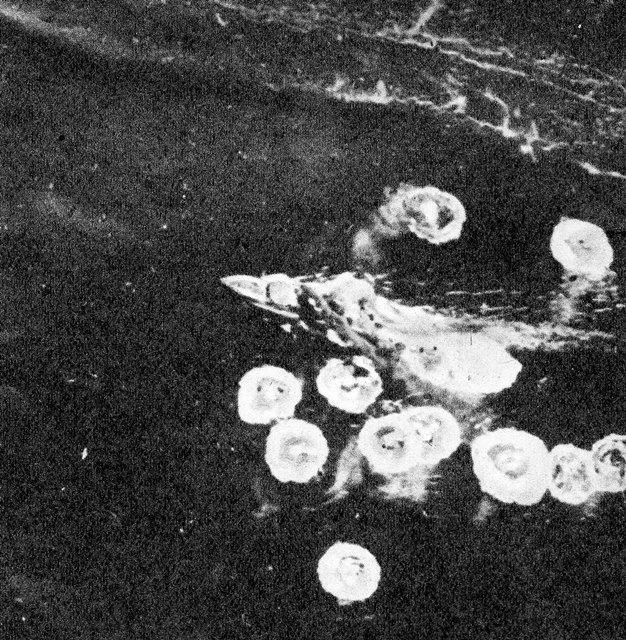
“Japanese planes bombing a ship in the Banka Straits”
from a contemporary WW2 Japanese magazine (source: Facebook page “Khota Baru 8.12.41” by Zafrini Arifin).
[Note: this vessel looks remarkably like the profile of either a HMML or HDML patrol launch at speed and is likely a shallow draft vessel in shallow water, because the waves are breaking on the shoreline or a reef very close by at top of photo.]
Anyone who has corrections, amendments, clarifications or additional material on the events, the crew or passengers of HDML 1062 is most welcome to contact the researcher and compiler of this document: Michael Pether, 2/23 Sanders Avenue, Takapuna, Auckland, 0622, New Zealand. Email is mncpether@gmail.com. Telephone number is New Zealand 09-4865754 or mobile New Zealand 0274543695.
This document and the information contained within may be used for any non – commercial purpose. Anyone wishing to use the content of this document for commercial purposes, book publication, magazine, newspaper or internet articles receiving payment or compensation is required to firstly obtain the agreement in writing of Michael Pether, Auckland, New Zealand who retains the copyright for the content of the document.
Sources:
- Auckland War Memorial Museum – War Graves project.
- Book “Spotlight On Singapore” by Denis Russell – Roberts, published by Times Press, Great Britain, 1965.
- Book “The Story of Changi” by David Nelson, published by Changi Publication Co., Australia 1974.
- JM – Jonathan Moffatt, researcher and author, his database of ‘Malayans’
- Medusa Trust, United Kingdom.
- Naval – history .net website – ‘Casualties of the Royal Navy’.
“Papers Past “– archive of New Zealand newspapers - Singapore National Library – newspaper archive
- Tauranga City Library – Debbie McCauley, Heritage Specialist, Tauranga city council – http://tauranga.kete.net.nz/remembering_war/topics/show/1016-colin-edward-macmillan-1899-1942
- Photo TCL /Ellen McCormack – this means Tauranga City Library file below:
- File from UK Archives of ‘Royal Navy’ compiled by Cmdr. Reid, RN, CO of Palembang POW camp and a copy kindly provided to the researcher by Kevin Snowdon in the UK, see aotn.dvrdns.org and his website “From Percy Main to Sumatra via France”.
- McCormack, Ellen (20158). Family history documents relating to the lives of Colin Edward Macmillan and Lillian Marie Elise Macmillan [Tauranga City Libraries, Research Collections: Sladden Collection, 929.3 MACM]
- UK National Archives files.
Crew:
- BURKE – Able Seaman Burke. “…Formerly ‘HMS Prince of Wales’ and now ‘Missing’…” (reported by Lt. G.K. Stein). The CWGC states ‘… Ordinary Seaman Edward Burke, D/MD /X 3139, Royal Naval Reserve, died 16.2.42, ‘HMS Sultan’ [this is the RN shore base in Singapore which Edward would have been attached after the sinking of the ‘HMS Prince of Wales’ and prior to the evacuation …”. It is also noted that the website ‘www.forcez-survivors’ does not list Edward Burke as a crew member of ‘HMS Prince of Wales’ or ‘HMS Repulse’.].
- DAY – Stoker 1st Class H. Day – “… died of wounds on about 20.2.42 on Banka …” (reported by Lt. G.K. Stein) which is probably the most accurate record of the death of George Lewis Day. The CWGC states “… Stoker 1st Class George Lewis Day, C/KX 99667, Royal Navy, died 16.2.42 (died ashore) ‘HMS Mauritius’. Son of Edward Stanley and Clara Day of Manor Park, Essex. Memorialised on the Chatham Naval Memorial Panel 83…” but this looks like it has been dated to align with the sinking of HDML 1062 and the CWGC may not have been aware of Lt Stein’s report. The light cruiser ‘HMS Mauritius’ was a relatively new ship in 1941 when it went to Singapore for a refit for ‘degaussing’ in November 1941 but left on 11 December 1941 when the Japanese invaded northern Malaya – it had taken on survivors of the sinking of the ‘HMS Prince of Wales ‘and ‘HMS Repulse’. Why Lewis Day was put ashore to soon join the crew of HDML1062 is unknown. After the sinking of his HDML he must have been wounded and somehow reached Banka island (perhaps with Lt Stein?) but died of his wounds on that island.
- ISMAIL – Able Seaman Ismail Bin Awang, #MN45, Royal Navy (Malaya Section) according to the CWGC he died on 14.2.42 (date appears to be incorrect) and on ‘HMML’ (should be HDML) 1062.
- MACMILLAN – Lt. Colin Edward Macmillan, RNZNVR. Mentioned in Despatches, died 16.2.42 (also reported as “Missing” by Lt. G.K. Stein). ‘The Medusa Trust’ website states that Lt MacMillan gained the MID for his courage during the evacuation of Sungei Punngor in 1942.Colin Edward Macmillan served in both World War One and the Second World War. He was born in Thames, New Zealand on 20 January 1899 to Robert and Mabel (nee Hart) Macmillan and had three siblings. As a small boy he lived on Beach Road, Katikati and attended No. 2 School, Beach Road, Katikati but his father died when he was 13 years old and Colin and his 15-year-old brother attempted to run the family farm with their mother whilst attending school – this proved impossible. The family returned to Thames and Colin attended Thames High School from 1913 to September 1915. Colin enlisted in Wellington, NZ on 21 January 1918 and embarked as a Gunner with the 43rd Reinforcements on the ‘Matatua’ for London on 2 October 1918 but it was soon noted he was underage and suffered from ‘claw foot’, so in April 1919 he was discharged as no longer physically fit for war service. He returned to Wellington, NZ., and worked for the Ministry of Health. He played rugby in that city and had a passion for the sea and boats, apparently owning his own yacht in Wellington at that time – he was also a member of (possibly Secretary) of the Royal Port Nicholson Yacht Club in Wellington at that time. When World War Two was declared, Colin applied to Admiralty House in London and was then assigned to training at the RN shore base in Singapore, ‘HMS Sultan’, as a Probationary Temporary Sub- Lieutenant attached to an ex- Yangste River gunboat, ‘HMS Grasshopper’. On 14 May 1941 Colin was promoted to Temporary Lieutenant serving in ‘HMS Grasshopper’ until 2 September 1941 and appears to have taken command of HDML 1062 as early as October 1941. Letters home during this period talk of his move and his regret at leaving his ‘ship’ (probably HMS Grasshopper’) and his move to command “… a small patrol launch…” plus comments that “ … of course life is most interesting, but some of our patrols are a little boring …, but other times we do some really interesting work …”. In December 1941 Colin and his launch were assigned to Special Operations on the west coast of Malaya and this is when he earned award of ‘Mentioned in Despatches’ (posthumously awarded). The 22.4.42 issue of the ‘Bay of Plenty Times” carried the only newspaper record in New Zealand of his fate – it simply said that he had been reported ‘Missing’ and “… is the son of the late Mr R.J. Macmillan and that his next of kin is his sister, Miss Vera MacMillan who is living in Sydney. The last word that his relatives in Tauranga received was that Lieut. Macmillan was in command of a small naval vessel at Singapore …”. In a letter to Colin’s sister Vera, dated 15 August 1946, Lieutenant – Commander Victor Cecil Froggatt Clark, RN wrote “… he served in ML1062 under my orders from some time during Dec 41 and Jan 42 and I came to know him well and liked him very much. In fact, I can say there was no ML. I liked being around so much. I was a POW from March 42 – last Sept and it was then I learned of his ML being sank and I was very sad to hear it … once again can I say how very sorry I am that your brother did not come through, but you may be proud of his always cheerful contribution to the cause in the blackest of days …” (sources – Tauranga City Library, Debbie McCauley, Heritage Specialist, Tauranga City Council – file, http://tauranga.kete.net.nz/remembering_war/topics/show/1016-colin-edward-macmillan-1899-1942 and Ellen McCormack – Tauranga City Library file,
McCormack, Ellen (20158). Family history documents relating to the lives of Colin Edward Macmillan and Lillian Marie Elise Macmillan [Tauranga City Libraries, Research Collections: Sladden Collection, 929.3 MACM]). - MANNING – Able Seaman Manning. “… Formerly ‘HMS Prince of Wales’. Missing…” (reported by Lt. G.K. Stein). The CWGC states “… Able Seaman Peter Manning, D/JX 213548, age 25 years, Royal Navy, ‘HMS Sultan’ [this is the RN shore base in Singapore to which Peter Manning would have been attached after the sinking of the ‘HMS Prince of Wales’ on which he is listed as crew]. Son of William and Annie Manning, of Leeds, Yorkshire. Also recorded on the Plymouth Naval Memorial, panel 66, Col.1 …”. A contemporary newspaper cutting displayed on the website ‘www.forcez-survivors’ records him as Able Seaman Gunner Peter Manning, son of the late Mr and Mrs William Manning, Vulcan Lane, Dewsbury. [Dewsbury is in West Yorkshire].
- MUHAMMAD – Able Seaman Tabal Bin Muhammad Yusuf, MN 508 (Royal Navy Malay Section), died 14.2.42 HDML 1062. Also commemorated on the Plymouth Naval Memorial, panel 97, Col.2 (CWGC).
- UMAR /OMAR – (a Malay rating by the name of ‘Omar’ was reported “Missing” by Lt. G.K. Stein), MPK. This may very well have been Ordinary Seaman UMAR Bin H. H., SE/X 716, (Malayan RNVR) ,MPK, 14.2.42 ‘ ( www.naval-history.net) who is recorded as attached to the Royal Navy’s shore base ‘HMS Sultan’.
- ROWLAND – Stoker 2nd Class William Rowland, D/KX 116K122, “… Missing, from Manchester…” (reported by Lt. G.K. Stein). The CWGC states “… Stoker 1st Class William Rowland, D/KX116122, age 21 years, died 16.2.42, HMML [should be HDML] 1062, Royal Navy. Son of Arthur and Elize Ella Rowland of Miles Patting, Manchester. Also recorded on the Plymouth Naval Memorial, panel 70, Column 1 …”.
- STEIN – Lt. George Keir Stein, MRNVR b.1915. From Bedford and at the time of his wedding in 1946 was recorded as the only son of Mrs N.J. Stein of Bedford. To Malaya 1939. Assistant, Joseph Travers Ltd. George Stein was a very good sportsman, in tennis and other sports, and has the distinction of there being 432 separate references to him in Singapore and Malayan newspapers! Appointed Lt SS RNVR September 1940 to Lt MRNVR, and by the time of the evacuation from Singapore he was First Officer under Lt MacMillan, RNZNVR, on HDML 1062 – sunk in the Banka Straits 16.2.42. George appears to have been the only survivor of the crew of HDML 1062 and was not captured until 23.3.42 at Pangkal Pinang, on the north eastern coast of Banka island so must have swum to the western coast and trekked cross the Island. Later a POW in Palembang, Sumatra. And again, later to Changi, Singapore. Returned to Joseph Travers, Penang 1946. Remained in Singapore a where he had the business of the representative of Phillips Bicycles. He married Mrs Natalie Denton, youngest daughter of the late Mr. Robert Wood & Mrs. Nellie Wood, from Wellington, NZ in September 1946 at St Andrews Cathedral, Singapore. Their daughter Amanda (later Mandy Elder) was born in 1949. George died 19 March 2004 in Berkshire aged 89 years. (JM and SFPMA 16.9.46). George Stein appears to have been to have been the only member of the crew of HDML 1062 to have survived what would have been a horrendous experience in the sinking of that launch.
- WELLS – Leading Seaman William E. Wells, (L.T.O.), RFRC?? C/J 98299, “… Missing…” (reported by Lt. G.K. Stein). The CWGC states “… Leading Seaman William Edward Wells, C/J 98299, Royal Navy (DSM.), age 38 years, died 16.2.42, HMML [HDML] 1062, son of William Edward and Elizabeth Waterman Wells, husband of Ethel Amy Wells of Romford, Essex…”. (CWGC and www.hmsmedusa.org.uk).
Passengers:
Although there are no records to date directly linking the following men to HDML 1062, it is the view of this researcher that the dates on which they were individually captured i.e. after the sinking of HDML 1062, and the fact that they were captured on locations on Banka island suggest strongly that one of them might have been the man described as “ … troops of Gordon Highlanders …” seen on the vessel on 14 February;
- CLARK – Private Alfred B. Clark, # 2878440, 2nd Battalion Gordon Highlanders. Alfred Clark was born on 19.3.21 and enlisted on 19.2.38. His NOK contact whilst in Palembang POW camp was shown as 64 School Street, Fraserburgh, Aberdeenshire. According to his MI9 questionnaire he was captured at Muntok, Banka island on 16.2.42 and was a POW at Muntok camp until April 1942 when he was transferred to Palembang POW camp in southern Sumatra where he remained for the duration of the War.
- CLEARY – Private Francis G. Cleary, # 2761836, 2nd Battalion, Gordon Highlanders. Francis Cleary was captured on 24.2.42 which is a week after the sinking of HDML 1062. He was a POW in Palembang camp until he joined a ‘Japan Party’, with 93 other POWs, which left by ship on 17.7.42 for Japan. His NOK address whilst in Palembang was Mrs Cleary, c/o Mrs Fodey, 5 Dalfield Terr., Dundee, Scotland.
- GALLACHER – Private Hugh Gallacher, # 2876873, 2nd Battalion Gordon Highlanders. Hugh Gallacher was born on 10.11.18 and enlisted on 11.11.35. His NOK address whilst a POW was ‘Father- Mr. W. Gallacher, 5 Stanton Crescent, Neatherton, Wishaw, Lanarkshire’. Captured on 17.2.42 at Pangkal Pinang, Banka island – this sounds like a possible mistake if the ship was sunk on 16.2.42 because Pangkal Pinang is on the opposite side of Banka island to where the HDML 1062 appears to have been sunk. On his MI9 questionnaire Hugh Gallacher recorded that he was in Sungei Ron Camp in March 1942, then ‘Chung. Wha ‘B’ Camp, then Mulo School camp – all in Palembang, Sumatra.
- MCGURK – Private Hugh McGurk, # 3054253, 2nd Battalion Gordon Highlanders. He was born on 29.10.17 and enlisted on 5.1.35. His NOK address whilst a POW was recorded as ‘Primrose Cottage, Boat O Garten, Inverness’ – this is a small village near Inverness. He was captured on 28.2.42 at Pangkal Pinang, Banka Island. This is of course some ten days after the sinking of HDML 1062 and perhaps the explanation is contained in his recording of his ‘1st Escape attempt ‘during the war ( as per his MI9 questionnaire) which stated “ … When sunk by a Jap cruiser on 17th February , instead of being picked up as a survivor I swam ashore and lived in the jungle with native fishermen. After about seven days like this I picked up four women and three children survivors of the SS Van Der Brook (sunk by Jap cruiser). These survivors were cared for by Malay women. The Japs were 80 miles away. After another three days the Japs found us through a native informer and took us to Pangkal pinang…” (MI9 questionnaire – COFEPOW website). The researcher can confirm that these women and children were almost certainly three generations of the Armstrong family from Singapore and an unnamed “White Russian” woman plus a child by the name of June Bourhill, who had all been passengers on the ‘SS Vyner Brooke” which had been sunk off the west coast of Banka Island on 14 February 1942 (see pp. 47-50 in the book “A Short Cruise on the Vyner Brooke “ by Ralph Armstrong). In what appears to be the record of the post war death of Hugh McGurk, there is a headstone in Lithgow cemetery (findagrave.com) that records Hugh Francis McGurk as the son of Hugh and Catherine McGurk , both of whom had died before the war, and two brothers who lost their lives during the war, plus an epitaph “ In loving memory of Hugh Francis McGurk, MN [researcher note – Merchant navy?]. Drowned at sea 27th January 1948 aged 30 years”.
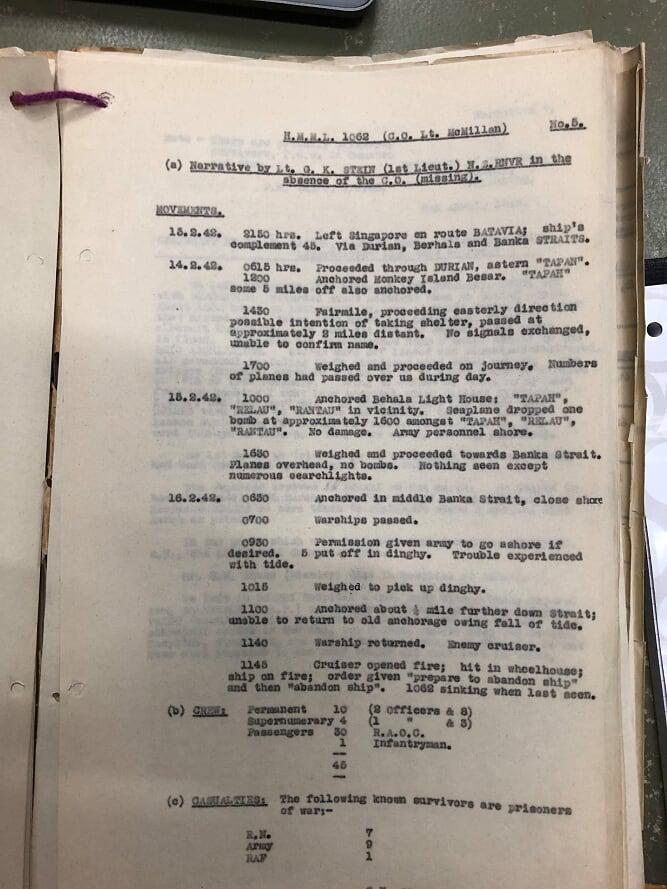
Original report by First Officer Lt G K Stein MRNVR
Courtesy Michael Pether
